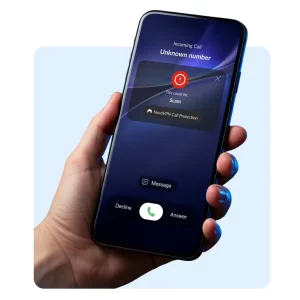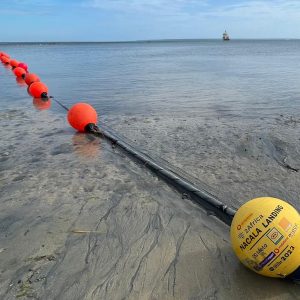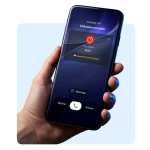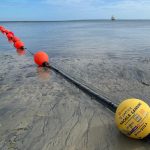Sponsored Links
Next Generation 150Mbps LTE UK Mobile Broadband Faces Delays to 2012
Posted: 04th Jul, 2009 By: MarkJ
Ericsson, one of the world’s leading suppliers of mobile phones and related network solutions, has warned that it could be 2012 before the first true next generation Mobile Broadband networks gain a good foothold in the UK. The deployment of Long Term Evolution (LTE) technology (aka - 4G), which could deliver download speeds of 150 to 1000Mbps, is being hampered by problems with releasing the needed 900Mhz spectrum.
Presently both O2 and Vodafone own some of the older 2G (900MHz) spectrum, which Ofcom is seeking to have redistributed to rival operators ( Orange , T-Mobile and Three (3) ). This could then be converted for use by 3G/4G voice and Mobile Broadband technologies, such as HSPA and LTE .
The recent failure of Lord Carters Digital Britain report (here and here) to reach a quick agreement on the matter means that the process will now not be complete until the end of 2010. Ericsson has informed PC Pro Magazine that it could then take until 2012 before LTE begins to saturate the UK market. Then there's the big issue of advertised versus real-world speeds.
Ericsson continued on to state that its roadmap aims to deploy 150Mbps but will ultimately upgrade to 300Mbps and then 600Mbps within the first phase/generation. Future 'Advanced LTE' enhancements could also hit 1Gbps, although none of these speeds are truly representative of what consumers can expect to receive.
LTE is certainly going to be a lot better at latency and handling multiple users, which has been a weak point of HSPA and older 3G or even 2G technologies; if you get too many people trying to go online in one area then the network can quickly before unworkable. There are also issues of capacity to consider, with mobile data being very expensive. It’s hard to see how operators could afford what LTE is capable of delivering.
The reality of 4G Mobile Broadband is likely to be faster and more stable, albeit not hugely so. Most current HSPA based 3G deployments can deliver speeds of up to 7.2Mbps, yet consumers usually see, at best, just 25% of that. The delay to LTE means that HSPA can be enhanced further to 14Mbps and possibly 42Mbps with HSPA+, although we expect the distance between what is advertised and what is delivered to become even more apparent.
To make matters worse T-Mobile is looking to sell its UK business (here), with both O2 and Vodafone in the frame as possible suitors. This could also place T-Mobile's complex network sharing agreement with Three (3) into uncertain territory and confuse the whole 900Mhz debate even further.
Presently both O2 and Vodafone own some of the older 2G (900MHz) spectrum, which Ofcom is seeking to have redistributed to rival operators ( Orange , T-Mobile and Three (3) ). This could then be converted for use by 3G/4G voice and Mobile Broadband technologies, such as HSPA and LTE .
The recent failure of Lord Carters Digital Britain report (here and here) to reach a quick agreement on the matter means that the process will now not be complete until the end of 2010. Ericsson has informed PC Pro Magazine that it could then take until 2012 before LTE begins to saturate the UK market. Then there's the big issue of advertised versus real-world speeds.
Ericsson's Chief Technology Officer, John Cunliffe, said:
"The technical guys know that advertising those big speeds is damaging, but they're the numbers the marketing guys want to push. It's difficult, if one company is advertising the maximum speed, for another to then turn around and advertise the likely speed. It's going to need everybody to be honest."
"The technical guys know that advertising those big speeds is damaging, but they're the numbers the marketing guys want to push. It's difficult, if one company is advertising the maximum speed, for another to then turn around and advertise the likely speed. It's going to need everybody to be honest."
Ericsson continued on to state that its roadmap aims to deploy 150Mbps but will ultimately upgrade to 300Mbps and then 600Mbps within the first phase/generation. Future 'Advanced LTE' enhancements could also hit 1Gbps, although none of these speeds are truly representative of what consumers can expect to receive.
LTE is certainly going to be a lot better at latency and handling multiple users, which has been a weak point of HSPA and older 3G or even 2G technologies; if you get too many people trying to go online in one area then the network can quickly before unworkable. There are also issues of capacity to consider, with mobile data being very expensive. It’s hard to see how operators could afford what LTE is capable of delivering.
The reality of 4G Mobile Broadband is likely to be faster and more stable, albeit not hugely so. Most current HSPA based 3G deployments can deliver speeds of up to 7.2Mbps, yet consumers usually see, at best, just 25% of that. The delay to LTE means that HSPA can be enhanced further to 14Mbps and possibly 42Mbps with HSPA+, although we expect the distance between what is advertised and what is delivered to become even more apparent.
To make matters worse T-Mobile is looking to sell its UK business (here), with both O2 and Vodafone in the frame as possible suitors. This could also place T-Mobile's complex network sharing agreement with Three (3) into uncertain territory and confuse the whole 900Mhz debate even further.
Search ISP News
Search ISP Listings
Search ISP Reviews
Latest UK ISP News








Cheap BIG ISPs for 100Mbps+
150,000+ Customers | View More ISPs
Cheapest ISPs for 100Mbps+
Modest Availability | View More ISPs
Latest UK ISP News
Helpful ISP Guides and Tips
Sponsored Links
The Top 15 Category Tags
- FTTP (6730)
- BT (3865)
- Politics (3046)
- Business (2738)
- Openreach (2632)
- Building Digital UK (2495)
- Mobile Broadband (2440)
- FTTC (2133)
- Statistics (2108)
- 4G (2067)
- Virgin Media (2003)
- Ofcom Regulation (1765)
- 5G (1698)
- Fibre Optic (1590)
- Wireless Internet (1585)
Sponsored
Copyright © 1999 to Present - ISPreview.co.uk - All Rights Reserved - Terms , Privacy and Cookie Policy , Links , Website Rules































